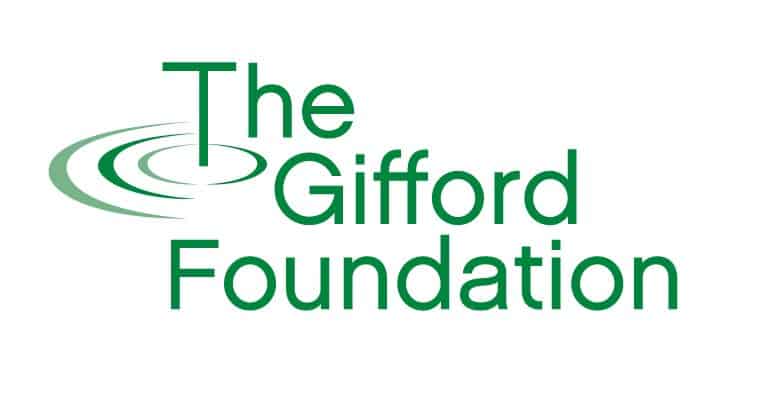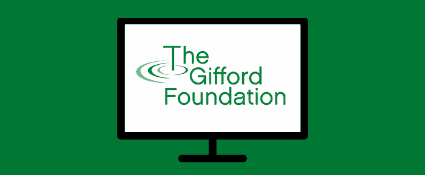Embracing Disruption
5 CNY nonprofits emerge with new programs and systems.
Published March 5th, 2024
On a snowy night in February, members from across the Central New York nonprofit community gathered together to celebrate the graduation of five organizations from The Gifford Foundation’s Embracing Disruption program and to hear updates about the impact of the 17-month capacity building initiative. This second graduating cohort was comprised of organizations in the human services, arts, and animal welfare sectors – each of whom were awarded $15,000 along with a year and a half of personalized consultant support designed to facilitate the self-assessments and planning necessary for robust organizational development.
The driving philosophy behind the program is the Nonprofit Lifecycles Model, a framework which identifies the universal developmental stages that all organizations pass through. By studying the characteristics of each stage, and understanding how they apply to their agency, nonprofits are positioned to better understand their current challenges, limitations, and priorities. It facilitates problem solving and goal setting by providing a comprehensive map of nonprofit growth and decline.
“I remember constantly thinking that our struggles were unique to us,” said Andrew Lunetta, Executive Director of A Tiny Home for Good. “If I learned anything through this last year and a half, it’s that we are on this continuum that all nonprofits deal with and there are tried and true methods for how to navigate it.”
(Article continues below)
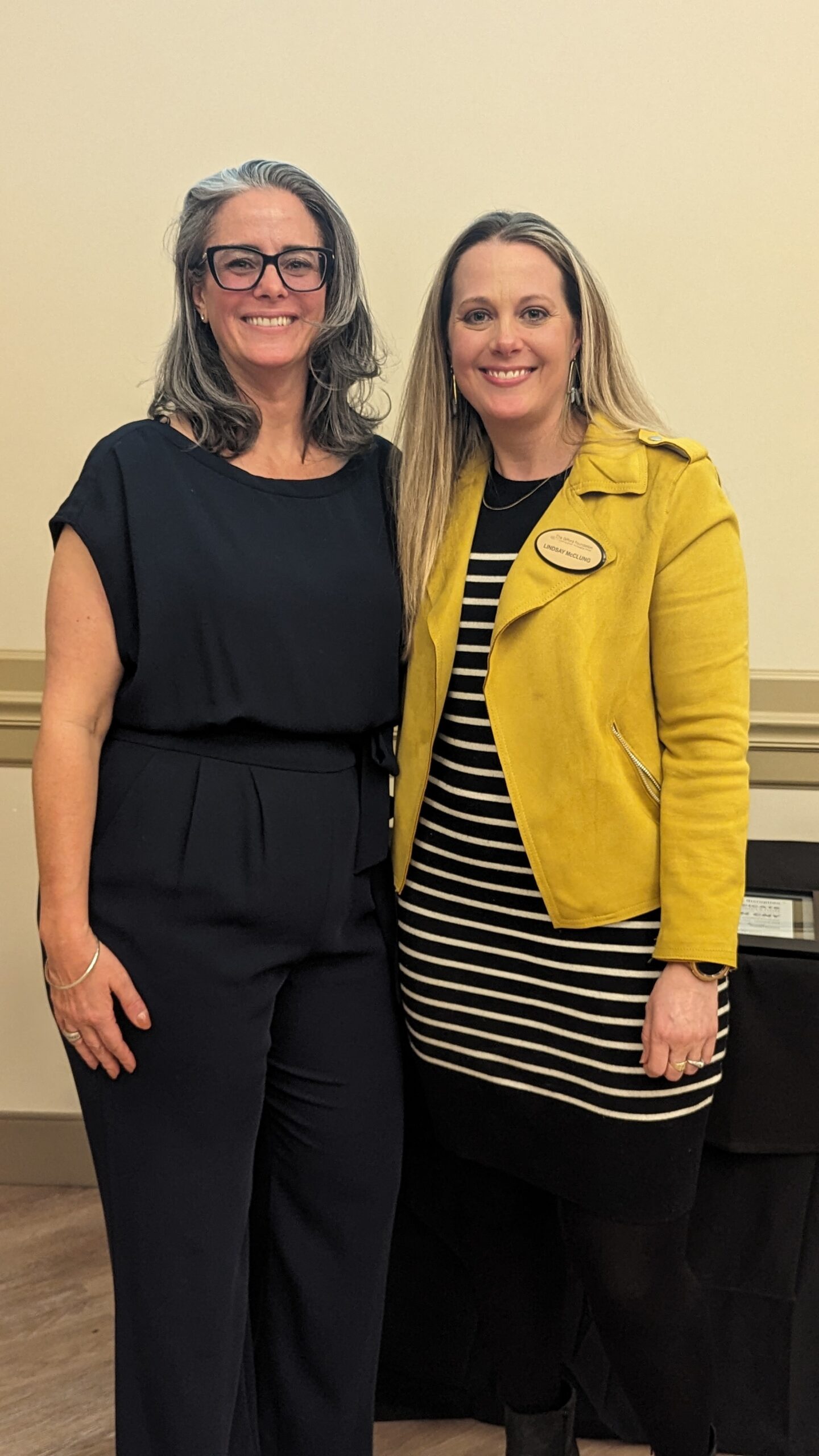
Nonprofit Lifecycles Institute CEO Jennifer Bonnett stands with Lindsay McClung, Associate Director of The Gifford Foundation. The two worked closely together to plan and execute the Embracing Disruption program.
Meet our Graduating Organizations:
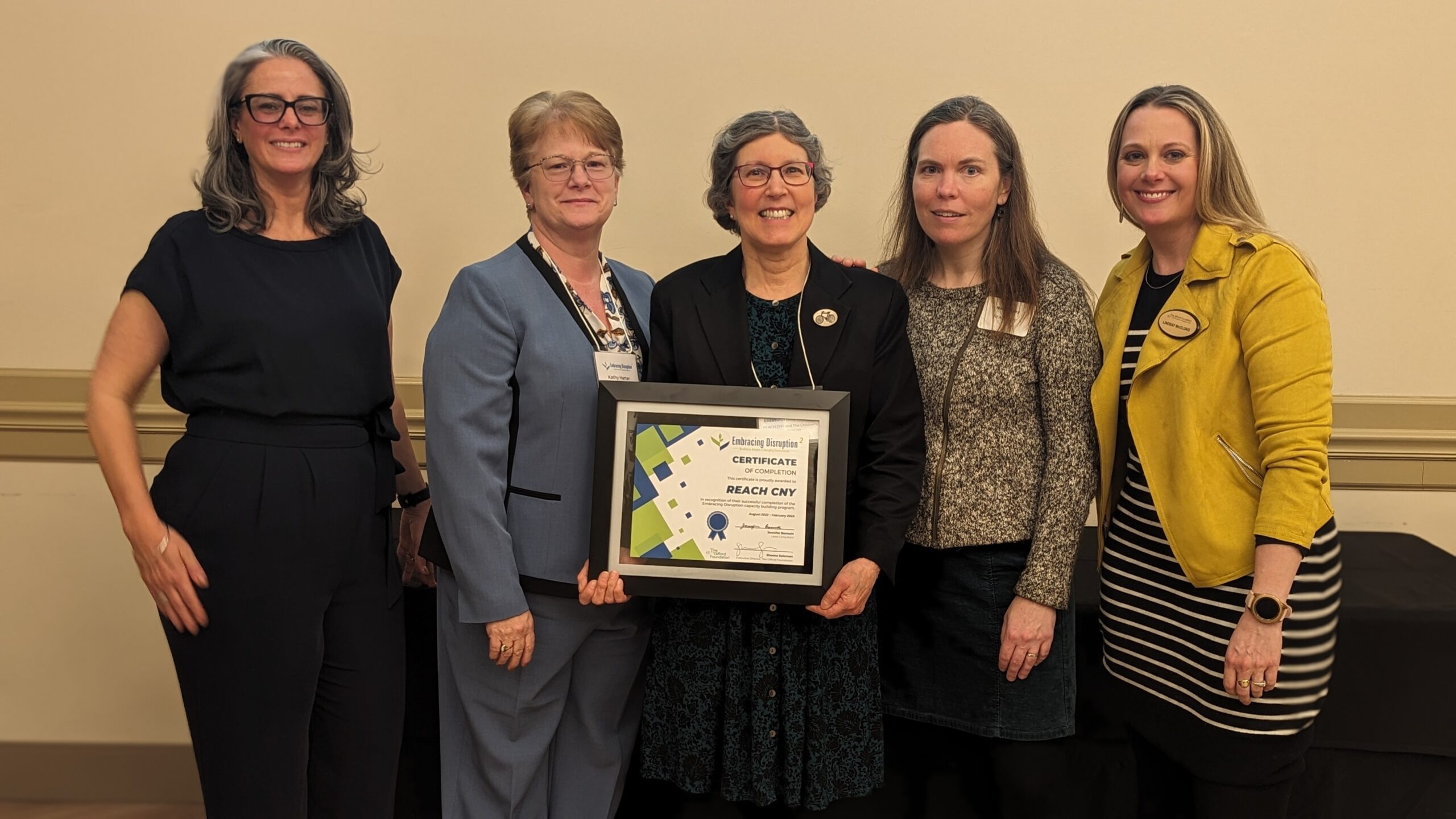
REACH CNY

A Tiny Home For Good
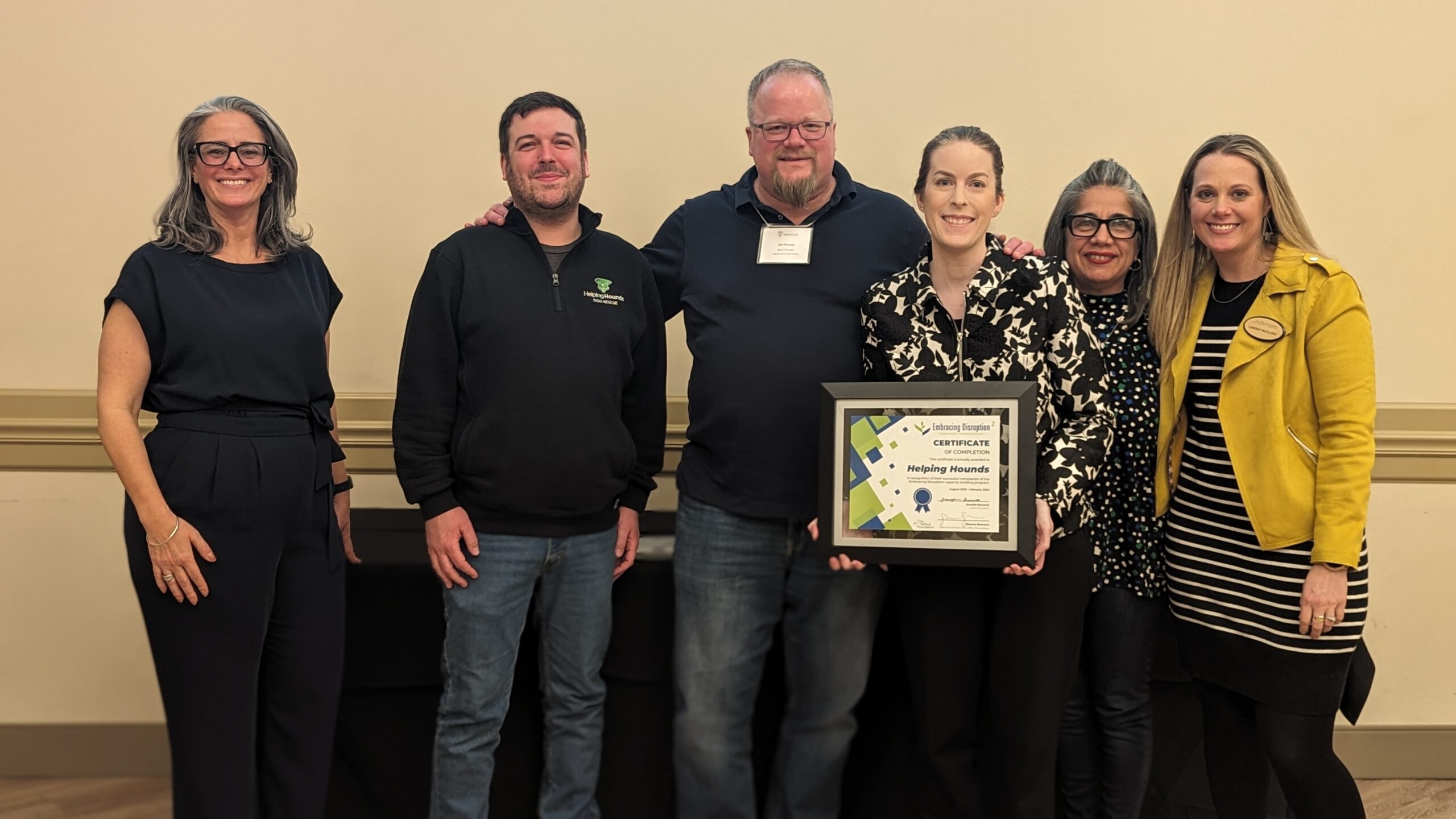
Helping Hounds Dog Rescue
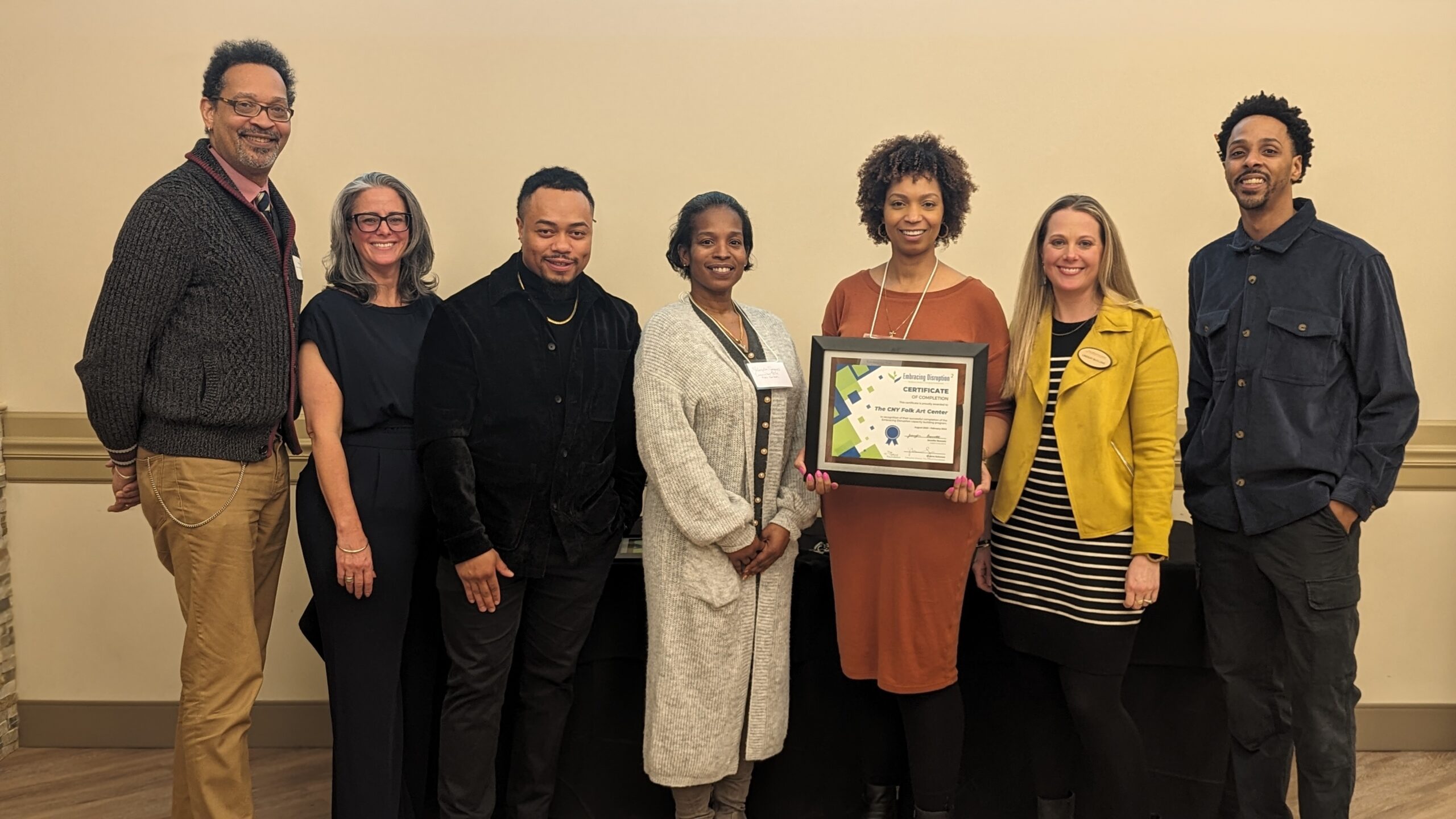
The Community Folk Art Center
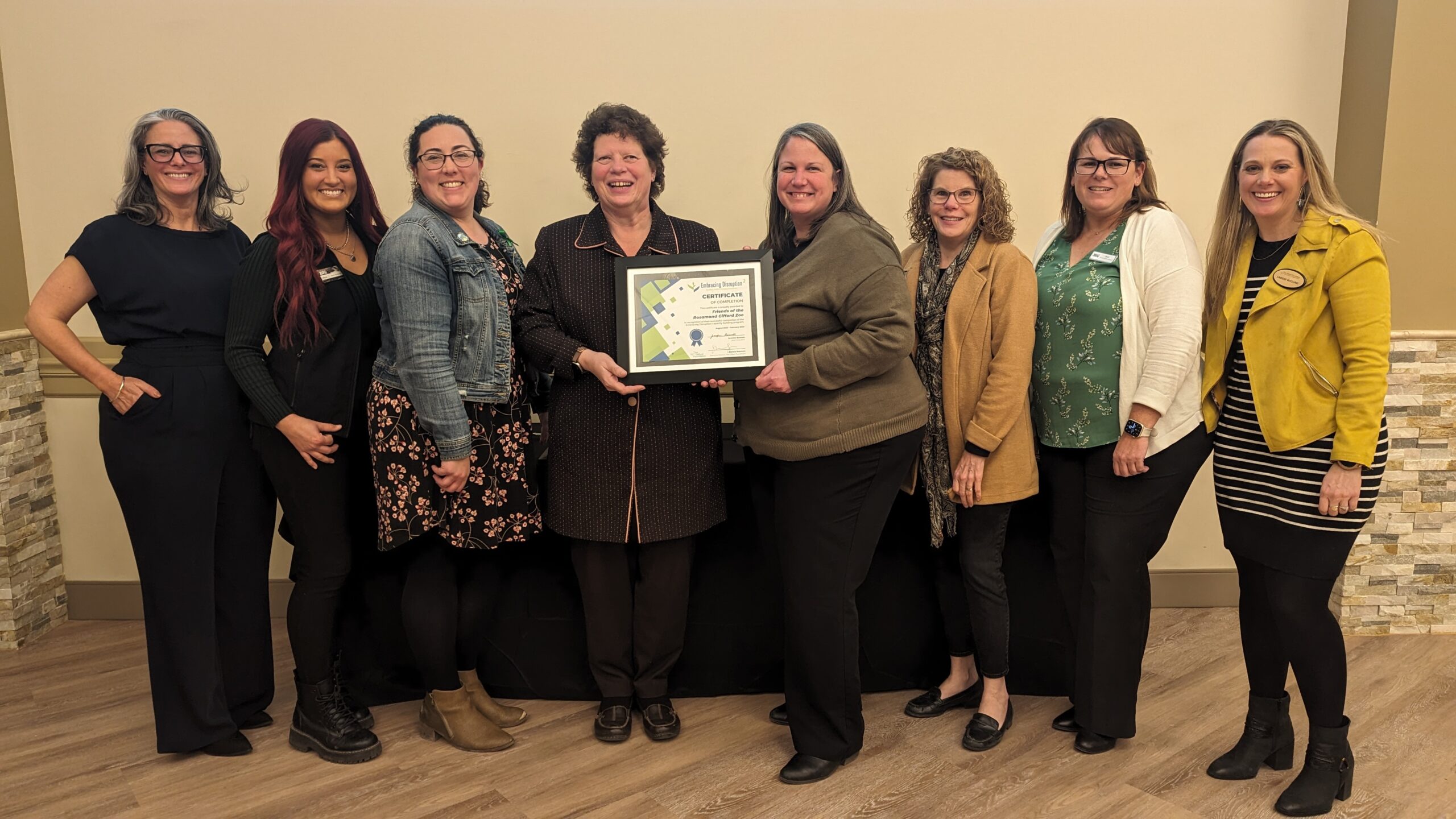
Friends of the Rosamond Gifford Zoo
Andrew founded A Tiny Home for Good in 2016 with the goal of ending homelessness. In the beginning, they had just one house built and only had the capacity to approach new construction one project at a time, explained Board Vice Chair Christianne Radziewicz. “Fast forward and we now have 30 homes, 32 tenants, and eight currently under construction all at the same time.”
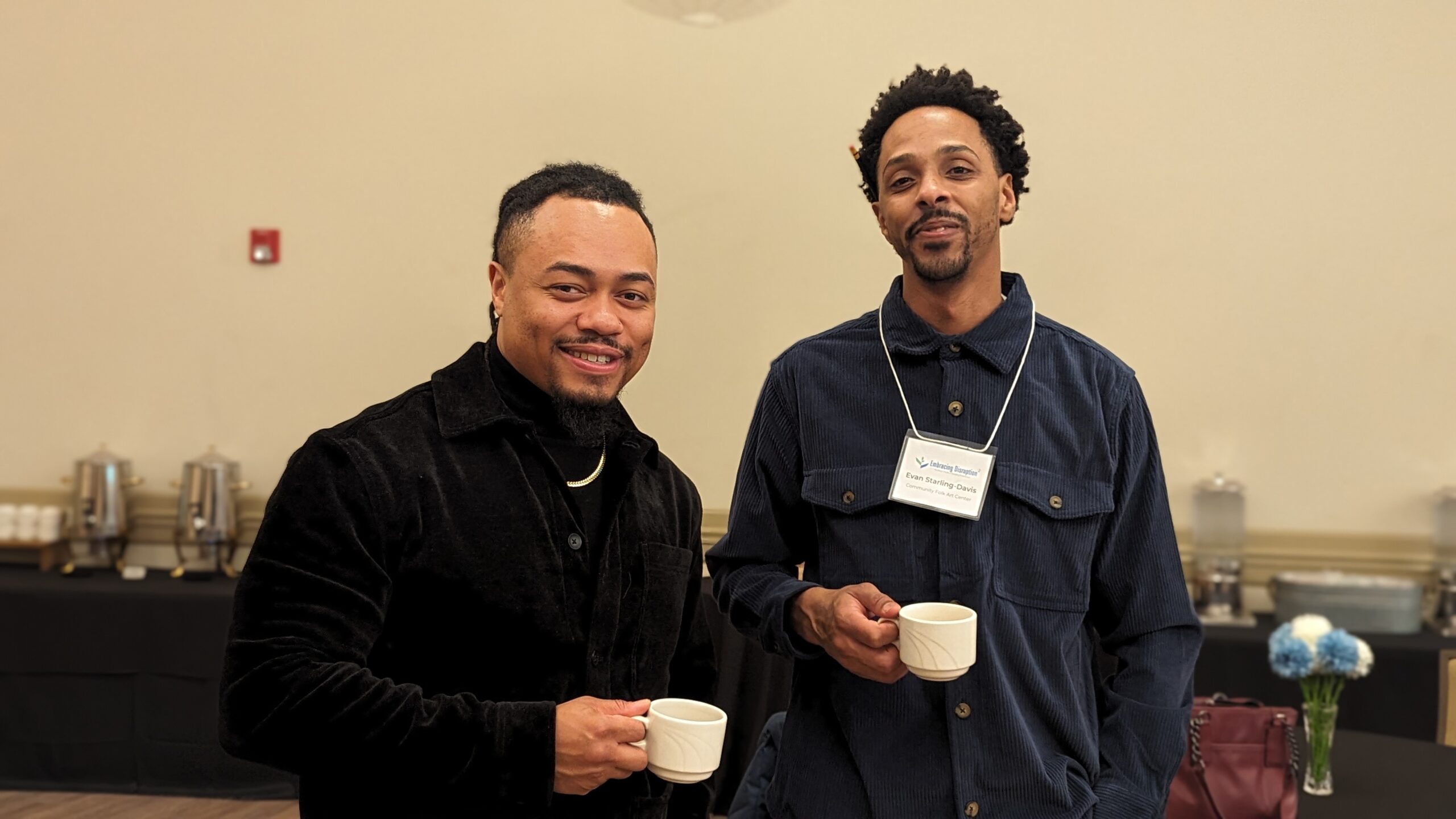
Consultant Ryan Williams (left) worked with The Community Folk Art Center throughout the course of the program. Board Member Evan Starling Davis (right) participated heavily as a member of their leadership team.
Over the course of their time in the Embracing Disruption program, A Tiny Home for Good hired their first social worker to provide enhanced tenant support, invested in new software systems for construction and donation management, restructured their board committee operations, and launched recurring community events. They also hired a construction manager and an office manager as part of an effort to build stronger support systems and better distribute operational responsibilities. “What did this program do for us? It gave us momentum,” said Andrew. “It gave us a chance to really look hard at ourselves, and how we are really going to achieve our mission, vision, and goals.”
The Nonprofit Lifecycles Model postulates that there are four “table legs” which support an organization’s programs, and that those programs ultimately support the mission and vision. The table legs are Administrative Systems, Management, Governance, and Business Model. Ensuring that each leg is developed proportionally with the rest is essential to preventing a “wobbly table” which will ultimately sabotage an organization by inadequately supporting its programs, mission, and vision. Nonprofits in Embracing Disruption learn to assess and invest in these systems holistically to facilitate balanced growth.
For The Community Folk Art Center, this meant developing a new revenue stream through renting out their space for events, and collecting better data to understand their audience. These steps led to the hiring of three new staff members which has led them to widen their reach and attract visitors and donors from Utica, Albany, and Rochester. “It was really important for us to collect data, and to do so in an innovative way,” said Executive Director Tanisha Jackson. “And by having good people in critical roles, I’m able to go after those other streams of funding that helps our organization to grow and to serve the community better.”
Establishing new and diverse revenue streams that do not distract from the nonprofit’s mission is a challenging pursuit, but is often indispensable if the agency is to avoid being thrown into chaos by changes in the marketplace. For many years, Helping Hounds Dog Rescue of CNY had earned much of its revenue through adoption fees. During COVID, when many people were choosing to bring a dog into the family, this meant record profits. However this adoption boom would eventually fade, leaving a hole in their budget.
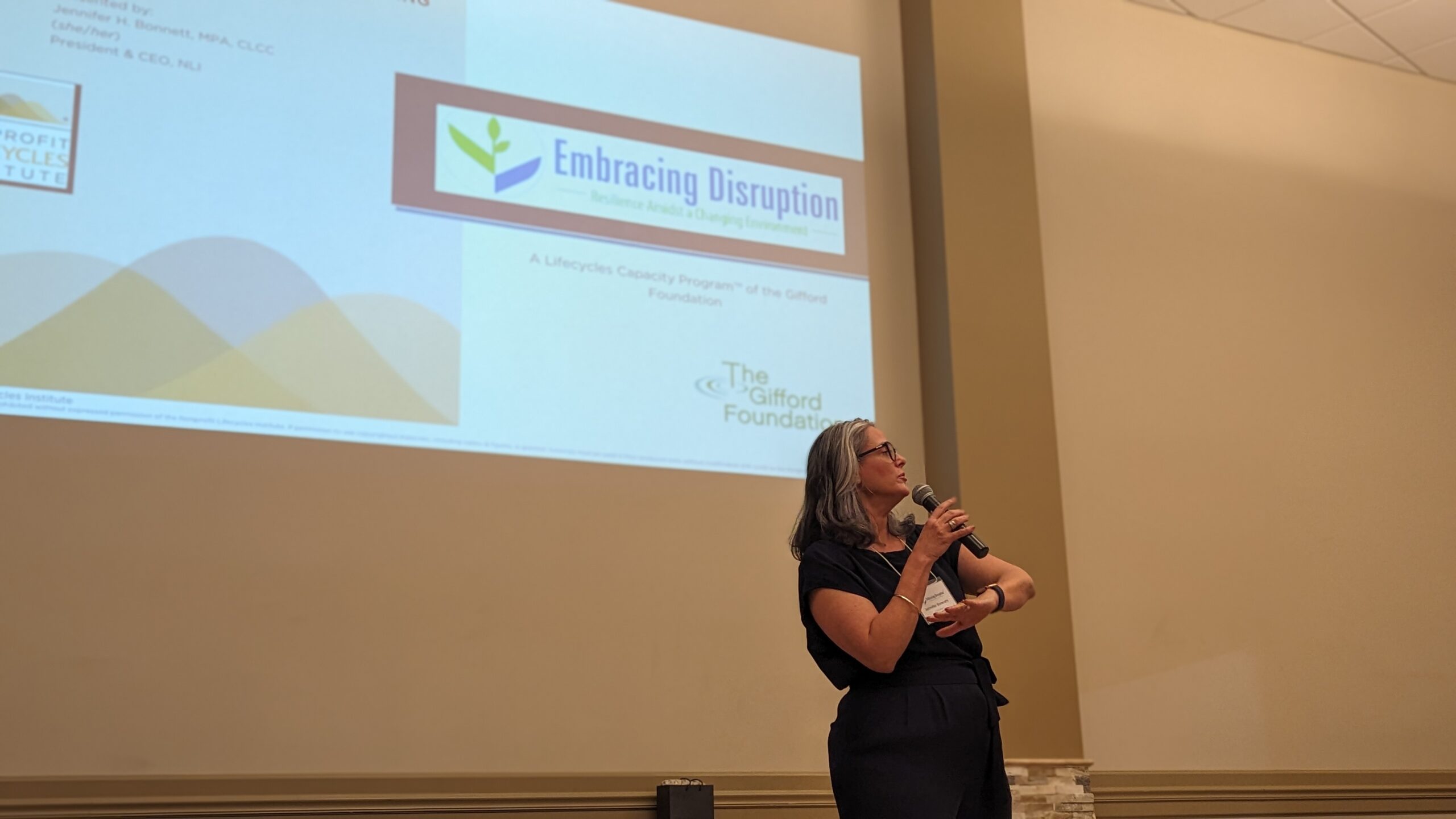
Nonprofit Lifecycles Institute CEO Jennifer Bonnett addresses the audience at the second Embracing Disruption cohort’s graduation celebration.
Over the past two years, they have invested heavily in providing other services such as boarding, grooming, and training as a way to continue engaging with their clients and also to develop relationships with dog owners who may have gotten their pets elsewhere. The response has been powerful, with the number of dogs being boarded at their facility having grown by over 1,000% over the past year. Investments into their communications capacity has also boosted their following and customer base via newly established presences on Instagram and TikTok.
Just as Helping Hounds identified new business opportunities by exploring what other services dog owners might want, Friends of the Rosamond Gifford Zoo followed a similar path by identifying ways to enhance the visitor experience beyond animal interactions. By upgrading and modernizing their food services and technology systems, they are able to not only make eating at the Zoo a more attractive option but are also able to more effective promote and process orders via automated text messaging, facility wide WIFI, and customer data tracking.
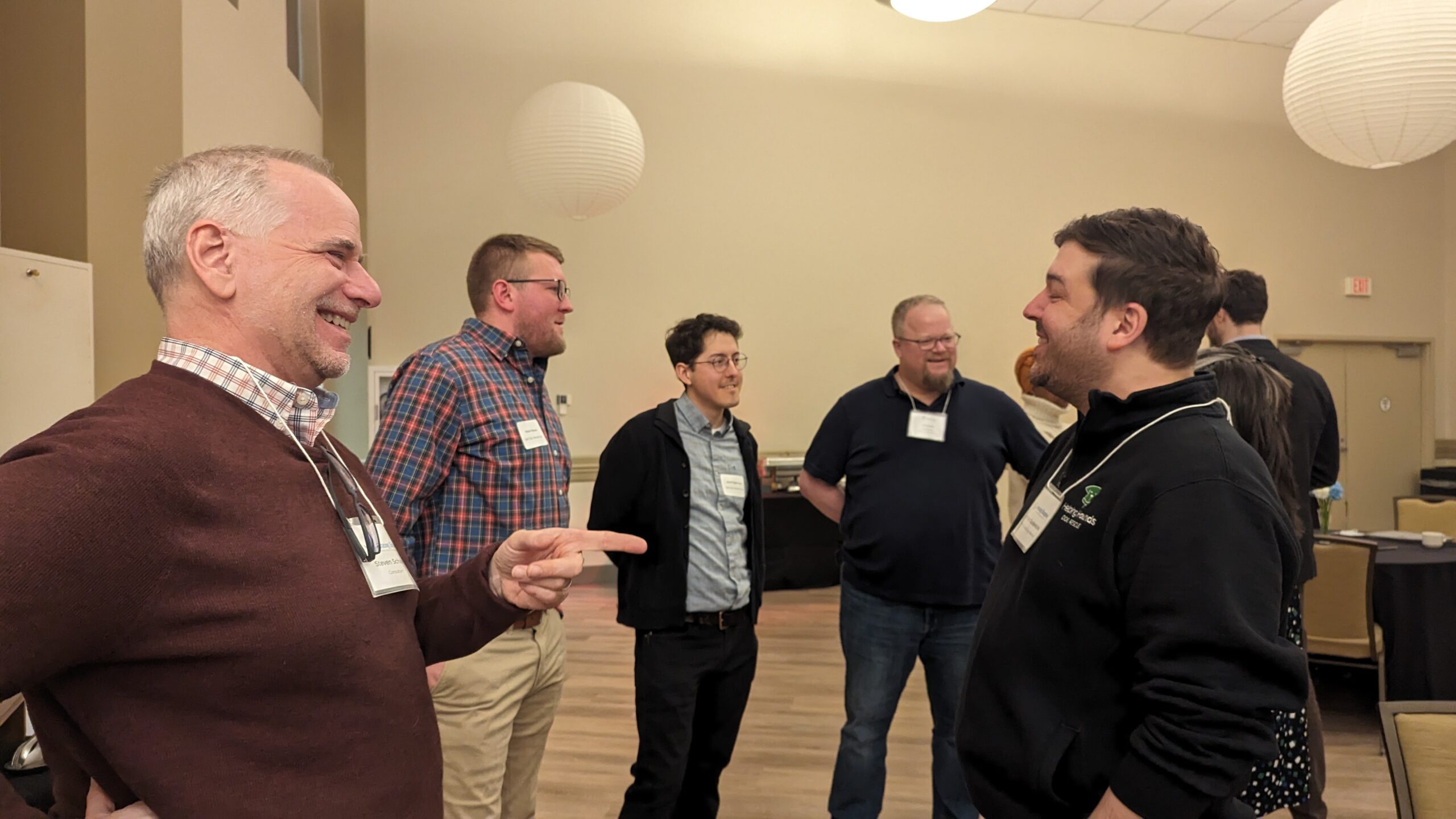
Consultant Steve Schack (left) jokes with Helping Hounds’ Operations Manager Nathan Ouderkirk.
Perhaps the most dramatic transformation within the program came when REACH CNY and The Children’s Consortium decided to merge. Recognizing that they served similar audiences within a similar region, they saw an opportunity to combine their resources while putting an end to their competition over resources. The two human services agencies had been exploring the idea, but were unsure if it was truly the best option and if so – how they should proceed in making it a reality.
“The program gave us the space to work through difficult questions, put emotions aside, and figure out the best way forward,” said Kathy Harter, Deputy Executive Director of REACH CNY and former Executive Director of The Children’s Consortium. After committing to the merger, they began solidifying the subsequent legal steps, integrating staff and systems, and creating new procedures to define roles and responsibilities – especially at the board level. “I’ve been in nonprofits for 20 years and I’ve never had a better board than I do now,” said Kathy. “I think a lot of that is due to this program.”
Although unique in the particulars of its structure, Embracing Disruption follows in the footsteps of past Gifford Foundation cohort capacity building programs like ADVANS and POWER. A fundamental theme of these initiatives is the peer component: while each organization has their own consultant and must do the work themselves, the experience of sharing their successes and failures alongside similarly positioned agencies creates deep bonds among the organizations and their leadership teams. The demanding nature of nonprofit work can be a barrier to long-term planning and peer interaction, and the cohort nature of these programs seeks to correct for that.
We hope you will join us in congratulating these organizations on their incredible progress and accomplishments. If a cohort capacity building program like Embracing Disruption sounds like it could be a good fit for your organization, please stay tuned: The Gifford Foundation is planning on launching a new cohort in the fall of 2024 and will be making announcements about eligibility and the application process in the coming months.
Subscribe to the Gifford Newsletter
Start enjoying our free quarterly publication today.
